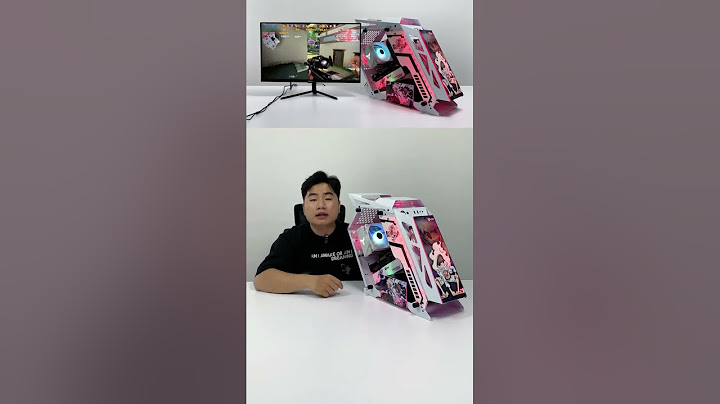The Canon EF 50/1.8 is Canon's "normal" lens for full frame 35mm camera. A "normal" lens is one that captures a scene similar to that seen by the eyes. It's not that it has a field of view equal to that of human vision, but it does produce an image that is "normal" looking and covers about the same area as the eye sees in detail. The eye actually has a very wide field of view, almost 180 degrees with binocular vision (both eyes open) but the edges of the field are indistinct and the brain just concentrates on the central region - which approximates to the view of a "normal" lens. There have been two versions of the Canon EF 50/1.8 lens. According to Canon they are optically identical, but they differ in mechanical construction and features. The early lens (Canon EF 50/1.8), was introduced in March 1987, had a metal lens mount, distance scale, separate manual focus ring and IR focusing indicator. The latter (and current) Canon EF 50/1.8 II lens, was introduced in December 1990, has a plastic lens mount, no distance scale or IR focus indicator and no separate manual focusing ring (you rotate a knurled ring on the front of the lens).  One of the best things about the EF 50/1.8 is that it's cheap. Under $100 new for the "II" version. The original metal mount version seems to sell used for a premium, often over $150. In fact there's one on eBay right now (Dec 09) - "with slight fungus" - listed for $269. That's really a silly price, especially for a lens "with slight fungus"!. The original lens is slightly more desirable due to better construction, but I wouldn't pay a huge price premium for one, nor would I buy a lens with fungus in it! The true "going rate" for the Mk I lens (as of Dec '09) is in the $150-$170 range. Remember also that any "Mark I" original lens was made before 1990. If you really want a Mk I "original" lens, your best bet is probably eBay At $100 for a new Mk II lens or ~$160 for a used original version you get a lens that's at least 2 stops faster than a consumer zoom (3 and 1/3 stops faster than an 18-55/3.5-5.6 kit lens) and even a stop and a third faster than any expensive f2.8 "L" series pro zoom. For candid and low light work or when you need a fast shutter speed to freeze action this is obviously an advantage. SpecificationsEF 50/1.8 EF 50/1.8 II Lens Construction (group) 5 5 Lens Construction (element) 6 6 No. of Diaphragm Blades 5 5 Minimum Aperture 22 22 Closest Focusing Distance (m) 0.45 0.45 Maximum Magnifcation (x) 0.15 0.15 Filter Diameter (mm) 52 52 Maximum Diameter x Length (mm) 67.4 x 42.5 68.2 x 41 Weight (g) 190 130 Given a choice. I'd take the original version of the EF 50/1.8. The "II" is lighter and it may focus a little faster, but given a choice I'd rather have the better build quality, metal mount and distance scales myself. If you want the original lens you'll have to look around for a used one though and they aren't all that easy to find. If you can't find a mk I lens, get the mk II and don't worry about it. You'll probably save $60-$70 anyway, and you'll have a brand new lens with a 12 month warranty, rather than a lens that's probably around 20 years old and comes without any warranty! You might ask "just how well can a $100 lens perform?" and the answer is quite well! A 50mm lens is one of the easiest to design and make. It doesn't need complex optics like retrofocus wideangle lenses or telephoto long lenses. You generally don't need aspheric elements or exotic type of glass either. The size of the optical elements is also quite small (and therefore inexpensive) compared to faster lenses and you can make an excellent, well corrected lens with only 6 elements. No doubt Canon make a lot of them and they designed the lens down to the lowest price by using a plastic lens mount and a very simple focusing system with no expensive USM motor. You aren't paying for any frills with the 50/1.8 II and you aren't paying for many with the original version either. Optical Performance of the Canon EF 50/1.8How does the EF 50/1.8 perform in practice? Well, like all fast lenses it's a little softer wide open than stopped down. However even wide open it's still not bad and in fact a little softness can sometimes be useful when the lens is used for portraits! On a crop sensor body (such as a Digital Rebel, EOS 40D, 50D or 7D) a 50mm lens has the same field of view as an 80mm lens would on a full frame camera, so an EF 50/1.8 is a very good portrait lens for use with such APS-C sized sensor DSLRs. Being an EF series lens (not EF-S) the 50/1.8 is equally useful on a full frame DSLR (EOS 5D or 1D(s) series body) where it's a "normal" lens suitable for a wide variety of uses from travel to portraits. It's a maybe a bit short for "headshots" but fine for 3/4 or full length people shots. Despite some internet claims to the contrary, I found the EF 50/1.8 is quite sharp even wide open. I suspect that some reports that it can be soft may be due more to focusing errors than any intrinsic defect in the lens. At f1.8 DOF is very small, especially when close focused. It does sharpen up a little (and gain contrast) when stopped down and this is typical for a fast 50mm lens. Both "Mk I" and "Mk II" versions are supposed to be the same optically but there are always lens to lens variations. I've seen magazine tests which rate the "II" version slightly better than the "I" version. In my tests, wide open, my "I" version had very slightly better edge resolution than my "II", and they were virtually the same in the center of the frame.  Center sharpness peaks at around f4 and at apertures between f4 and f22 there's not much difference between the 50/1.8 and the more expensive Canon 50mm lenses like the 50/1.4. The faster lenses may be a touch sharper and have slightly higher contrast between f1.8 and f3.5, but the difference isn't huge. In the corners of the full frame image there is some softness wide open, though astigmatism and CA are well controlled. The corners sharpen up as you stop down. By f4 they are pretty good (and vignetting is low), though they do get a bit sharper by stopping down to f8, where I think they are at their best. On a crop sensor camera the corners appear better since the corners of an APS-C frame see what a full frame sensor sees at about 60% of the distance to the corner, where image quality is higher. The best balance of center and edge resolution ("sweet spot") probably comes at around f8 with full frame cameras, and maybe f5.6 on crop sensor cameras. It's possible that the USM focusing on the f1.2 and f1.4 versions is slightly more accurate than that of the f1.8. The 50/1.8 can sometimes hunt for focus a little in low light, but in good light AF seems quite good. Occasionally AF will shift slightly between two shots which can move the focal plane slightly. At f1.8 this might be noticeable since DOF is so small. Distortion, astigmatism and chromatic aberration are all well controlled and none of these aberrations is likely to show up, even in large prints. There is noticeable vignetting (corner darkening) wide open at f1.8, especially when the lens is used on a full frame camera, but that's more of a characteristic of fast lenses on full frame cameras then a problem with this particular lens design. It's pretty much gone if you stop down a couple of stops. Some vignetting is present in all lenses. If it bothers you, it's easily corrected in Canon's DPP software if you shoot RAW and most current Canon DSLRs have a "Peripheral Illumination Correction" option, which when selected will automatically correct for vignetting in-camera when the images are saved as JPEGs. On crop sensor cameras, vignetting really isn't an issue. For portrait work, where absolute ultimate razor sharpness isn't always an asset (people tend not to want to see their every blemish in high resolution detail!) and corner sharpness isn't usually a matter of any concern, I have no hesitation at all in shooting the 50/1.8 wide open.  The above is a 100% crop from an image shot with a 50/1.8 with the lens wide open at f1.8 using an EOS 5D camera (ISO 100). Sorry about the 1/2 closed eye. That's what happens when your subject blinks! I think you'll probably agree that the resolution is pretty good with every eyelash clearly resolved - and in fact it perhaps shows too much skin texture! One warning though is that DOF is pretty shallow at f1.8. For a portrait taken from a distance of 6ft, the total DOF is only 5.5" (+/- 2.75") when using a full frame DSLR. That means if the tip of the nose is in focus, the ears might not be! It also means you have to be pretty careful exactly what you focus on. An example is shown below: .jpg) Again a 100% crop, shot with the EF 50/1.8 wide open at f1.8, this time using a crop sensor DSLR (EOS 20D). As you can see the left eye is sharper than the right due to the very shallow depth of field. As an added bonus, the EF 50/1.8 performs quite well when used with a Tamron 1.4x TC ( the Canon EF 1.4x will not fit of course), giving you a very usable 70/2.5 (or an equivalent 112/2.5 on an APS-C format DSLR like a Digital Rebel or EOS 40/50/7D). ConclusionGiven its low price, small size and light weight, the is a lens that many photographers should keep in their camera bag for those times when a fast lens is needed or isolating a subject by having a blurred background and small depth of field is desired. It's small enough and light enough that it's easy to carry it around with you all the time and it's cheap enough that cost isn't really a concern. From a price/performance viewpoint the EF 50/1.8 (II) has to be one of Canon's best lens bargains. The worst (and only real negative) feature of the Canon EF 50/1.8 II is the low cost construction using all plastic parts. This no doubt keeps the cost down, but the popularity of the more solidly built Mk I version on the used market shows that lots of people are willing to pay an extra $50 for a better constructed lens, even if it's 20 years old! Whether Canon will ever replace the Mk II with a more expensive and better built Mk III I don't know. The saving grace of the 50/1.8 II is that the optics are excellent, especially considering the price of the lens, so don't let the plastic construction put you off buying one. The maybe slightly better optically at wide apertures and is somewhat better built, but it's 3.5x the price of the 50/1.8 II. The more circular 8 blade iris of the f1.4 lens may also give somewhat smoother out of focus background blur than the 5 blade iris of the f1.8 lens. It's also 2/3 stop faster of course. For some photographers these additional features make it worth the extra cost. |




















